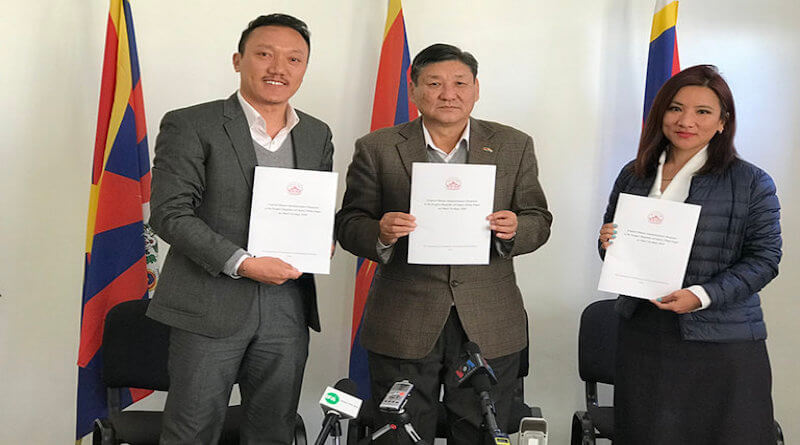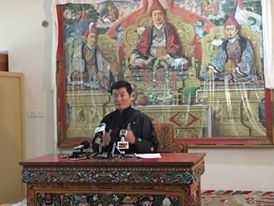CTA responds to China’s White Paper on Tibet’s Environment, says it does not match ground realities

DHARAMSALA, Dec 31: China’s White Paper on Tibet’s Environment do not match ground realities, the Central Tibetan Administration(CTA) said today at a press conference held here in Dharamsala.
DIIR Secretaries Sonam Norbu Dagpo and Tenzin Dhardon Sharling presided over the press conference along with Zamlha Tempa Gyaltsen, an environmental research fellow at Tibet Policy Institute and the head of the Environmental and Developmental Desk, a think tank based in Dharamsala as the CTA released its 21-page response to China’s white paper on Tibet’s environment 2018.
“The paper would have been a wonderful reading for someone who knows very little about Tibet, but for a regular observer, there are too many lies and factual errors and contradictions between policies and implementations,” CTA President Dr Lobsang Sangay said in the foreword of his administration’s response to China.
The State Council Information Office, of the Chinese communist regime published its white paper on Tibet’s Environment titled, “Ecological Progress on the Qinghai-Tibet Plateau,” earlier this year on July 18 which stated that China and the Chinese government have taken ecological conservation as a top priority, and regard protection of the Plateau as a vital task for China’s survival and development.
Calling it a brazen lie, the CTA said that unfortunately, weak environment policies and the lack of sincere environmental conservation efforts by the Chinese government has further exacerbated the fragile ecosystem of Tibet.
DIIR Secretary and the CTA’s head of response team fro China’s white paper, Sonam Norbu Dagpo said that environment conservation is a universal issue that rises above political concerns.
The CTA further maintained that Tibetan people ad the Chinese government could work together for a more effective environmental conservation across Tibet and urged China to make a sincere effort to protect the Tibet, the roof of the world from further damage and degradation.
Giving an overview of the 21-page book published by the Department of Information and International Relations, Zamlha Tempa Gyaltsen the boo contains eight chapters to refute China’s claims while additionally highlighting the littering problem in Tibet and natural disasters due to China’s rampant ill-advised developmental projects across the Tibetan plateau at the cost of the fragile Tibetan environment.
Zamlha Tempa Gyaltsen issued an initial response to China’s white paper on July 21, three days after it was published by China’s State Council Information Office. CTA will soon launch its response in Tibetan and Chinese language as well.





